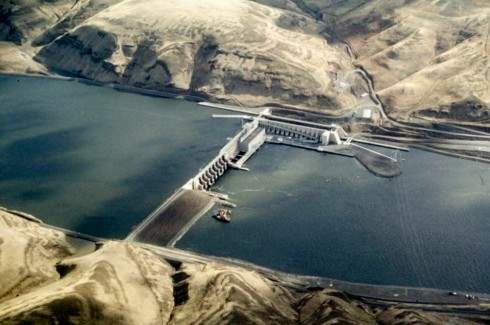forum
library
tutorial
contact

Utilities in Support of
Lower Snake River Dams
by TJ Martinell
The Lens, June 7, 2019
|
the film forum library tutorial contact |

|
Utilities in Support of
by TJ Martinell
|
 This legislative session, Washington lawmakers approved a bill calling for the state to achieve 100 percent clean energy, while at the time authorizing a $750,000 stakeholder group study reexamining the four lower Snake River hydroelectric dams in its 2019-21 operating budget. Among the primary concerns over the clean energy bill highlighted by utility providers were ensuring baseline stability and reliability; the bill also included protections against spikes in energy rates.
This legislative session, Washington lawmakers approved a bill calling for the state to achieve 100 percent clean energy, while at the time authorizing a $750,000 stakeholder group study reexamining the four lower Snake River hydroelectric dams in its 2019-21 operating budget. Among the primary concerns over the clean energy bill highlighted by utility providers were ensuring baseline stability and reliability; the bill also included protections against spikes in energy rates.
However, some public utility districts (PUD) says that if the state wants to preserve all three, the Snake River dams need to stay.
That sentiment was reflected in a recent resolution unanimously approved by the Grays Harbor PUD Board of Commissioners. The three-member board oversees the PUD which covers most of Grays Harbor County, and portions of Jefferson, Pacific and Lewis counties.
Under SB 5116, utilities are required to shift toward clean energy sources such as wind and solar to achieve 100 percent carbon-neutral electricity by 2030, then be 100 percent carbon-free by 2045. However, the Grays Harbor resolution states that the loss of "firm winter capacity generated by the Lower Snake River Dams would add to a forecasted Northwest shortfall in energy capacity."
Commissioner Russ Skolrood told Lens their biggest concern is "the effect on our ratepayers. If you do away with the four lower Snake River dams, you lose all that baseline."
The four dams are the Ice Harbor, Lower Monumental, Little Goose and Lower Granite, which several endangered salmon species such as chinook must pass through in order to reach habitat further upstream; juvenile salmon must also pass through them to reach the Pacific Ocean.
Despite millions spent on fish passage and improved survival rates, various groups have argued that the dams need to be removed for the salmon population to recover. Governor Jay Inslee's Southern Resident killer whale task force last year recommended further study of the issue even though prior research by NOAA Fisheries concluded that salmon and Southern Resident killer whale recovery can be achieved without removing any of those dams. Other studies have highlighted the role of other predators and salmon species on the endangered chinook population.
The new study approved by the state legislature will have a stakeholder group "address issues associated with the possible breaching or removal of the four lower Snake river dams in order to recover the Chinook salmon populations."
"To me it's a waste of money to do a study," Skolrood said. "I think for them it's the optics of saying they're looking at it."
A similar view is held by Washington Policy Center Environmental Director Todd Myer. "The $750,000 being spent by the state is pure waste. What we're buying are town meetings so that people can dress up as an orca."
Although removing the dams would ultimately require congressional authorization, Skolrood added that "if you don't speak up, it gains traction more and more all the time."
The Grays Harbor resolution also warns of "irreparable damage to Washington and the Pacific Northwest's role as a leader in clean, carbon free energy production" were the dams to be removed. According to the Bonneville Power Administration which oversees the dams along with the Army Corps of Engineers, the dams have the capacity to provide 3,000 megawatts of carbon-free power and currently generate enough power for 800,000 average U.S. homes. Although hydro-generated power is not given the same preferences under SB 5116 as other carbon-free energy, Skolrood says it offers the stability other sources can't provide.
"I know everybody wants to go to the renewable energy and (they) think wind and solar are the answer, but they don't have any way to store that power right now. There's time when you have to have baseloads. If you don't have the baseload of hydro, you either have to burn gas or go back to doing coal."
He added: "The problem is hydro is not valued at what it really should be. Hydro should be worth more. It's carbon free. You can ramp it up and down. But it's valued the same as wind and solar on the market."
Meyers said that even if authorization to breach the dams were granted, the $1.3-2.6 billion that BPA estimates it would cost would be spent on other salmon recovery efforts such as fish barrier removal. "There's plenty of things we could do that would be better."
Other PUDS in favor of preserving the dams include Benton and Franklin, which passed a joint resolution in 2017.
learn more on topics covered in the film
see the video
read the script
learn the songs
discussion forum
